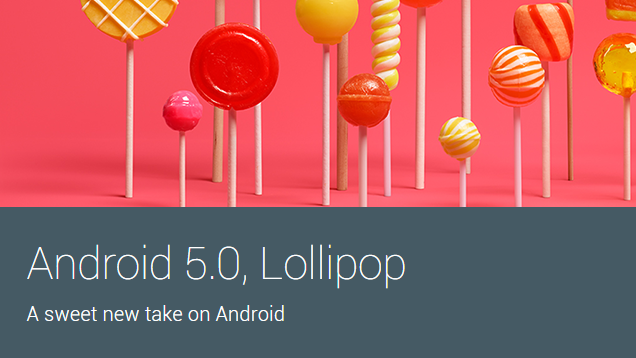The next version of Android is on its way. Unveiled at Google I/O 2014, the new version is called Android L. Here’s a roundup of what it will offer.
While previous Android generations have been named after desserts (Kit Kat being the most recent), for now at least this version is simply known as Android L.
A Brand New, Unified Design
The new version of Android comes with a brand new interface, built on Google’s new Material Design principles. The interface features brighter colours, smoother animations, and tools for developers to build apps that look the same on Android and the web.
Android L Release Developer Preview
For the first time, Google will allow developers to download the new version of Android before it is released to the general public. As Apple does with iOS, developers will be able to download an early build of Android to developer devices.
A New Notification System
Android’s L release has a new approach to notifications. In Jelly Bean, Google allowed developers to add expanded information and functionality to notifications. Now, users can access their entire notification list directly from the lock screen. You can swipe down to expand the notification panel to get more information. You can also swipe up to unlock the device.
Google L also adds heads-up notifications that allow developers to add a small box that appears above full-screen apps that users can expand, act on, or dismiss without leaving the app they’re in or opening the full notification shade.
User Authentication Via Wearables
In conjunction with Android Wear, Android L gives Android phones the ability to authenticate devices with your watch. If your phone is near your smart watch, the phone will not prompt you to enter an unlock code or pattern. However, if you remove the device your phone is authenticating with, your phone require whatever alternative authentication you chose.
Multitasking Is Now “Recents”, Includes Chrome Tabs
Google has revamped Android’s multitasking interface in a big way. It is now called “Recents” and includes individual tabs in Chrome. The new Recents UI uses a card-style design you can cycle through with a swipe. Because apps and Chrome tabs are treated equally, it makes it easier to navigate between different tasks.
This system also helps clean up the messy way that Android navigates between apps by allowing search results to jump directly into sub sections in apps and treat them as distinct instances in the Recents section.
The ART Runtime Is Now The Default
As of the L release, Google is making the ART runtime the default instead of the Dalvik engine that Android has used since day one. In addition, Google has added support for 64-bit architectures. This should help improve performance on your devices, though it may break compatibility with some apps.
Battery Saving Mode
Google mercifully gave developers some new tools to see what is using up your device’s battery and better tools for scheduling tasks so they don’t run down your battery. On the user-end, Google is adding a new Battery Saver mode that you can activate manually, or schedule to activate under certain conditions that will disable certain battery-hogging features when your battery gets low.

Comments